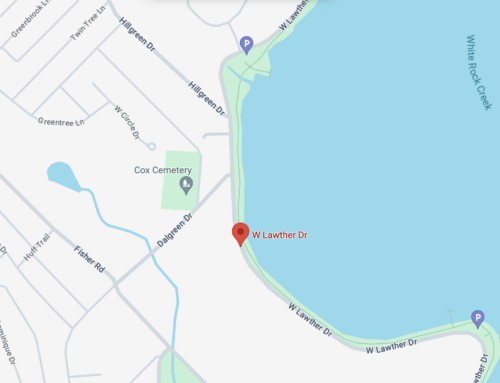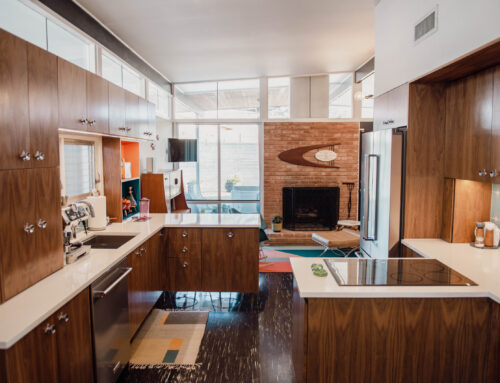In 1941, Roger Hansen’s father taught him to sail on White Rock Lake. As he grew older, Hansen became an avid sailor, frequenting the lake weekly as a member of the Corinthian Sailing Club.
About three years ago, Hansen became concerned when the lake’s silt built so high that it was impossible to sail in some parts of the lake. He and other sailors called the City’s Park & Recreation Department and began working to clean-up the lake.
“It is frustrating,” Hansen says. “You’ve got people working on it, and it’s going in the right direction. I just hope we have the money to do what we need to do. “If we’re too poor to do something with White Rock Lake, then we must really be in a rag-tag state,” Hansen says. “There’s a lot of people who use White Rock Lake. If you can’t keep track of White Rock Lake, you’re going to lose all your public parks.
“White Rock Lake is a real jewel. If you let it go to death, the City of Dallas has lost a major asset.”
Time and Money
Hansen is just one of the many people working to clean-up White Rock Lake. He doesn’t belong to any formal organization, but he and other sailors monitor the work the City is doing and lobby to get White Rock cleaned up.
It has been 20 years since the lake was last dredged. Since that time, silt has gradually built-up in the lake, becoming so high that sailing is impossible on the north end.
And keeping the surrounding park clean and maintained is becoming tougher as use of White Rock increases, but the demands for City money have grown tighter.
Several members of the City staff, neighborhood residents and lake advocates are working to save the lake and park to restore it to its one-time grandeur.
There’s lots of talk and plenty of planning being done. But lake advocates lack two crucial elements to make a difference – time and money.
“We are already at a critical point,” says Councilman Glenn Box, whose district includes White Rock Lake.
Box says he hopes the City will hold a bond election either later this year or early in 1995, and he plans to make sure White Rock Lake improvements are part of the bond election.
Improvement plans include dredging the lake, reforestation and repaving hike and bike trails. Costs of renovating the park and lake are estimated to be $5-$10 million.
“At a minimum, we need to get it back to at least where it isn’t like it is now, where you can walk across the lake,” Box says.
To get the lake in the bond election, Box says he, neighborhood residents and lake advocates will have to convince the rest of the Council, as well as other City residents, of the lake’s importance to our entire City.
“There’s kind of a ‘take it for granted’ attitude; you don’t see an emergency or a disaster,” Box says.
“I don’t want to think what could happen.”
What Did Happen?
Nancy Begel, an engineer with the Park & Recreation Department, is in charge of cleaning-up the lake.
“If it doesn’t get on the bond election, there wouldn’t be anything done at the lake,” Begel says. “I wouldn’t know where to go for $5 to $10 million.”
“I would hope that there’s enough support in the community that they don’t see it as just an East Dallas project, but as a City-wide project.”
During the past few years, White Rock Lake has received plenty of attention because of its deterioration, Begel says. Neighborhood residents and lake users call the Park Department regularly to voice their concerns.
Right now, Begel is working on a contract with a private engineering firm for a feasibility and diagnostic study to determine the best way to dredge the lake and how to slow-down sediment build-up.
Silting is a natural process in a lake. But in White Rock, silting has speeded up in recent years due to increased run-off and erosion from development upstream in North Dallas and Collin County, Begel says.
The study will cost $225,000, and Begel has applied to the Environmental Protection Agency for a $100,000 grant through its Clean Lake Program to help pay for the study. The City will pick up the remaining $125,000 balance.
In order to have the lake project included in the next bond election, the study must begin now, Begel says. It will take a year to develop a clean-up plan and cost estimate.
The lake’s deterioration can’t be blamed on any single group or individual, Begel says. The last bond election was in 1985, when the lake wasn’t in critical condition. At the time, given the then-rapid growth of the City, no one thought it would be 10 years before another bond election, she says.
“What’s a big issue now, wasn’t necessarily a high priority then,” Begel says. “I don’t think people anticipated how quickly the lake accumulated sediment. The feeling was that money will always be there.”
But in recent years, the maintenance and program department of the Parks & Recreation Department has learned firsthand that the money isn’t there anymore.
Jennifer McRorey, community program coordinator for the Park & Recreation Department for District 1, which handles our neighborhoods, says for the last seven years, the budget for park maintenance has been cut.
White Rock’s maintenance budget used to be about $500,000. Today, it is $300,000. Maintaining the lake and the surrounding area, which include about 2,000 acres, has become more difficult, causing the department to prioritize maintenance needs.
The park is maintained by a staff of 15, which includes seven full-time employees and contractors for other jobs. To cope with the funding cutbacks, mowing has been cut back from 7- and 14-day schedules, to 14- and 21-day periods.
In order to pick-up the slack, McRorey says her department is turning to the community for help. There is an Adopt-A-Shoreline program where community members, organizations or businesses can take the responsibility of maintaining a segment of the shore line. Other individuals and organizations have donated money or plants and trees for the park. And every September, the White Rock Trash Bash brings together about 600 residents to clean-up the lake.
“People have been more than willing to step in and volunteer,” McRorey says. “Without that, we would be in real trouble.”
McRorey says the lake’s problems are compounded by increased park usage, more automobile traffic, and more runners, bikers and roller-bladers.
“White Rock is a priority with the department,” McRorey says. “We’re not going to lose White Rock Lake. It’s a very important landmark in the City.”
And that landmark is particularly important to neighborhood residents and businesses, says Jan Baldwin with Baylor Health Care System. Baldwin works with other members of the Greater East Dallas Chamber of Commerce to monitor and support efforts to renovate the lake.
Last fall, the chamber formed a committee look into cleaning up the lake, and for now, the group is waiting for the right time to lobby the Council to put cleaning up the lake on a bond election.
“Chamber membership believes its one of our greatest assets and needs to be maintained,” Baldwin says.
Friends of the Lake
Jeannie Terrilli lives by White Rock Lake, and you can usually find her there walking, running, riding a bike or sitting and enjoying the scenery.
When Terrilli called the Park & Recreation Department about the lake’s deterioration, she learned the City didn’t have enough money to properly maintain the park.
So Terrilli formed Friends of White Rock Lake about a year ago to help clean-up the park and fund maintenance projects.
“White Rock Lake has been referred to as the jewel of the City,” Terrilli says. “It’s a very important part of Dallas.”
“It’s not the City’s fault that they can’t maintain it. They just don’t have the money to take care of it.”
The eight-member board of directors for the organization is comprised of individuals who can address all concerns of the lake, Terrilli says.
Members range from a horticulturist to a recreational expert. The group is small for now, but Terrilli says as it takes on more projects, the group will solicit more volunteers.
So far, the group has worked on reforestation projects, getting new picnic tables and cleaning the lake.
“I’ve lived in Dallas all my life and lived near the lake,” Terrilli says. “I’m there a lot and see the need. The City doesn’t have the money for the maintenance at the lake. It’s going to have to come from groups like ours.”
The group has divided the park into zones, following a City plan. They develop goals for each zone, then work to accomplish the goals by soliciting donations and volunteers.
The group helped beautify a zone on the west side of the lake and is now working on an area from the Dallas Arboretum and Botanical Society to Winfrey Point.
“We’re going to go all around the lake,” Terrilli says. “The City has spent so much money on plans. We’re hoping to raise some funds to help support the plans.”
What Is The City Doing?
The Park Department has plans for an all-around improved look to the park. But once again, there is no money for the plans.
Tom Anderson, superintendent of planning and research with the City’s Park & Recreation Department, says the department began developing plans for White Rock in 1987, when City residents started complaining about the park.
The park department developed a management plan to improve park operations, a design plan for a new look and a master plan for use and development.
Anderson says the department worked with neighborhood residents and lake users on the plans. They don’t know how much it will cost to complete the projects, but it is estimated in the millions.
Even if the money is approved in the next bond election, Anderson says it will be a few years before anything will be done because the bonds must be sold before work can begin.
How the Dredging Must Be Done
Jim Apken, with the Dallas County Audubon Society, began working with the Park Department about five years ago to improve the quality of the lake’s prairies, wildflowers and wildlife.
He and members of the Audubon Society advised the department about environmental concerns – such as how to preserve the water birds and their habitat when dredging.
Apken has documented about 200 species of wildflowers at the lake, regularly taking people on walking tours of flowers.
“This is not a lake with a bunch of weeds around it,” Apken says. “It’s one of our greatest assets. It has to be saved.”
Once work is commenced, the dredging must be done as quickly as possible because dredging will stir up the lake’s vegetation, Apken says.
Some vegetation will be killed during the dredging, and it will need to regenerate itself. The sooner dredging is completed, the quicker the lake can return to its natural environmental process.
The Bicyclists’ Concerns
Tim Bolinger, with the Greater Dallas Bicyclists, also helped the City develop plans for improved hike and bike trails. Bolinger has ridden his bike around the lake since 1980.
“You can see obviously something needs to be done,” he says. “I think it’s a big priority to people who live around the lake, to people who use the lake.
“It’s real easy to figure out how much it would cost to dredge the lake; you can put a dollar amount on that. You can’t put a dollar amount on the loss of White Rock Lake.”
But Bolinger says if lake advocates are going to get anything done, they have to convince the City Council and the rest of the City that money needs to be spent on the lake as opposed to the City’s many other priorities.
“The squeaky wheel gets the grease,” Bolinger says.





